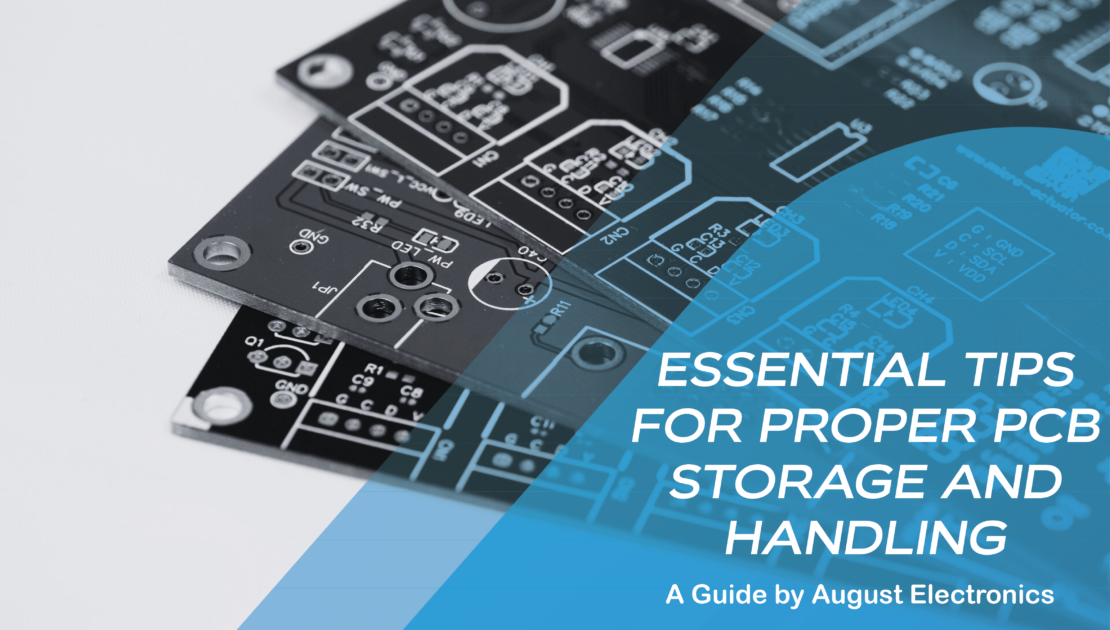Essential Tips for Proper PCB Storage and Handling
Essential Tips for Proper PCB Storage and Handling

In the intricate world of electronics manufacturing, ensuring the longevity and reliability of Printed Circuit Boards (PCBs) is paramount. With decades of experience under our belt, August Electronics stands at the forefront of delivering excellence in PCB care. This article is designed to navigate you through the best practices for proper PCB storage and handling, ensuring your projects are built on a foundation of quality and precision.
The Critical Importance of PCB Care
The journey of a PCB from fabrication to incorporation into the final product is fraught with potential hazards. Static electricity, moisture, physical stress, and contamination are just a few of the enemies lurking in the shadows, waiting to compromise the integrity of your boards. Understanding the implications of these threats is the first step towards mitigating them. Let’s delve into the specifics of how proper storage and handling play a pivotal role in safeguarding your PCBs.
Elevating PCB Storage and Handling Practices
1. Embrace Environmental Control
The environment in which PCBs are stored can significantly impact their performance and lifespan. Fluctuations in temperature and humidity can lead to board warping, delamination, or the proliferation of moisture-induced defects. Implementing strict environmental controls is a cornerstone of proper PCB storage and handling, ensuring that your PCBs remain in pristine condition, ready for assembly or shipping.
2. The Significance of Original Packaging
Manufacturers often overlook the benefits of original packaging for PCB storage. These packages are not just containers but are designed to offer comprehensive protection against static, dust, and mechanical stress. When the original packaging is not an option, alternatives like conductive foam or antistatic containers can serve as effective substitutes, providing a safe haven for your boards until they’re ready for the next step in the manufacturing process.
3. Strategic Stacking and Storage
Efficient use of space is a common concern in manufacturing facilities, but when it comes to PCBs, strategic storage solutions are vital. Utilizing shelving units designed for electronic components can help organize and protect your inventory. These solutions often include features like ESD protection and adjustable compartments, catering to PCBs of varying sizes and sensitivities.
The Art of Handling PCBs
1. The Right Gear Makes All the Difference
The human body is a natural conductor of electricity, making it a potential threat to the sensitive electronic components on a PCB. Equipping your team with the right gear—antistatic wristbands, gloves, and tools—is a small investment with significant returns in terms of product integrity and safety.
2. Precision and Care in Every Touch
Handling PCBs with care extends beyond personal protection. Techniques for picking up, inspecting, and transporting boards should be standardized within your team to avoid accidental damage. Encourage practices such as using both hands to support larger boards and avoiding contact with connector pins or components, which are pivotal for maintaining the integrity of the PCBs during the manufacturing process. Proper PCB storage and handling techniques are essential for ensuring the longevity and reliability of these critical components in electronics manufacturing.
3. A Clean Space is a Safe Space
Contamination from dust, debris, or even fingerprints can affect the solderability of PCBs or cause failures in the field. Maintaining a clean workspace is not just about aesthetics; it’s a critical component of quality control. Regular cleaning schedules, along with the use of cleanroom-grade supplies, can significantly reduce the risk of contamination.
Beyond Basics: Special PCB Storage and Handling for Advanced Components
As technology advances, so do the components that populate PCBs. Many of these advanced components have heightened sensitivity to moisture, temperature, and ESD. For high-density interconnect (HDI) boards or those with Ball Grid Array (BGA) components, specialized handling protocols become even more critical. Employing vacuum pick-up tools, moisture-sensitive component storage solutions, and enhanced ESD protection measures are just a few ways to address these challenges.
Conclusion: Cultivating Excellence in PCB Care
At August Electronics, our commitment to quality extends beyond the manufacturing process. We believe that excellence in PCB storage and handling is a cornerstone of delivering superior electronic products. By embracing the guidelines outlined in this comprehensive guide, you can significantly enhance the reliability, functionality, and longevity of your PCBs.
In the ever-evolving landscape of electronics manufacturing, staying informed and adhering to best practices in proper PCB storage and handling is key to success. For more insights, support, and expertise, August Electronics is your dedicated partner in navigating the complexities of electronics manufacturing.
Contact us for further exploration and a deeper understanding of how we can elevate your electronics projects.
